#joro orb weaver
Explore tagged Tumblr posts
Text

Sharing the concept art for my Chryslestia family! Gonna have to snip a lot of HCs/notes so you can find the full thing over on my dA. Anyways, more info under the cut!
💙 Queen Celestia - Ruler of Equestria. Sun Deity. Royal Batpony Alicorn (With Heliacorn Attributes). Agender (She/he/it/they), Pansexual Demi 💙 Queen Chrysalis - Ruler of Equestria, Former Queen of the Changeling Hive. Reformed/Former Villain. Non-Reformed Queen Changeling. Nonbinary (It/xey/they/she), Bisexual Demi 💙 Princess Antlion Aphid - Princess of Equestria. Heir to the Sun. Solar Astronomer/Engineer. Has anxiety. Royal Alicorn-Changeling Hybrid (With Batpony/Heliacorn Attributes). 35 y/o. Nonbinary (It/its and She/her mainly), Lesbian. Likes studying the sun, sundresses, large hats, hosting parties, yoga, calligraphy and diplomacy. Aphie is based off of antlion larvae, not so much aphids but it's a cute lil addition to her name. Special talent is using the sun to power technology! 💙 Princex Hercules Metalmark - Princex of Equestria. Heir to the Sun. Armorer. Has autism. Royal Alicorn-Changeling Hybrid (With Batpony/Heliacorn Attributes). 35 y/o. Agender (They/them and xey/xem mainly), Trixic. Likes puzzles/cipher cracking, keeping fit, fruit, fire, sappy movies, giving gifts and winter. Inspired by the Hercules Beetle and the Metalmark Butterfly! Special talent is crafting enchanted armor! 💙 Prince Joro Orb Weaver - Prince of Equestria. Heir to the Sun. Seamster at Carousel Boutique. Royal Alicorn-Changeling Hybrid (With Batpony/Heliacorn Attributes). 35 y/o. Transmasculine/Nonbinary (He/him, It/Its, She/her), Bi. Likes designing outfits, spoken word poetry, spiral patterns, fantasy shows/books, posters, journaling and social events. Inspired by the Joro Spider and the common Yellow Garden Spider/Orb-Weaver! Special talent is sewing outfits! 💙 Princex Tsetse Deathwatch "Click" Beetle - Princex of Equestria. Heir to the Sun. Nurse. Gravedigger. Mute. Has autism. Royal Alicorn-Changeling Hybrid (With Batpony/Heliacorn Attributes). 35 y/o. Genderfluid (They/them and it/its mainly), Omni. Likes history documentaries, playing the guitar, baggy clothes, cemeteries, volunteering, birds and brownies. It was initially named "Princex Malachite" and based off of the Malachite butterfly, but since I've changed its' name it doesn't really resemble what its' currently named after: the Tsetse Fly and Click/Deathwatch Beetles. Special talent is healing creatures! 💙 Princess Venusta Orchard Mason - Princess of Equestria. Heir to the Sun. Gardener. Builder. Farmer. Royal Alicorn-Changeling Hybrid (With Batpony/Heliacorn Attributes). 35 y/o. Transfeminine/Nonbinary (They/them and She/her), Aro/Sapphic. Likes worms, pottery, lemonade, architecture, foraging, climbing trees, falling leaves and making friends. She's mainly inspired by the strikingly blue Orchard Mason Bee, which I first saw around my early high school years iirc and fell in love with it. The other half, Venusta, comes from the Venusta Orchard Spider! The 'Venusta' part of their name actually wasn't initially there, but I thought it'd be a pretty edition, especially since the two bugs share the word 'orchard' in their names. Special talent is building strong structures! 💙 Prince Rosy Maple Brimstone - Prince of Equestria. Heir to the Sun. Influencer. Disc Jockey. Party Thrower. Royal Alicorn-Changeling Hybrid (With Batpony/Heliacorn Attributes). 35 y/o. Intersex (He/him), Ace/Queer. Likes hyperpop/house music, makeup, bright colors, flea markets/antique malls, soap carving, blogging and raves. Rosy is mainly based on the Rosy Maple Moth, but the other part of his name comes from the Brimstone Butterfly! Special talent is DJing and music production! 💙 Prince Atlas Adonis Blue - Prince of Equestria. Heir to the Sun. Drag Queen. Royal Alicorn-Changeling Hybrid (With Batpony/Heliacorn Attributes). 35 y/o. Demiboy (He/him and They/them), Gay. Likes singing, the stars, glowsticks, finance, karaoke, collecting mugs, clubbing, glitter and cleaning. Atlas is of course inspired by the Atlas Beetle and the Adonis Blue Butterfly! Special talent is performing!
#venomverse#oresteiaverse#mlp#nextgen#fanchild#mlp nextgen#venomdraws#my little pony#mlp fim#chryslestia#princess celestia#queen chrysalis#antlion aphid#hercules metalmark#joro orb weaver#tsetse deathwatch 'click' beetle#venusta orchard mason#rosy maple brimstone#atlas adonis blue
41 notes
·
View notes
Text

By Christina Butler from Georgia, United States - [Joro Spider - Trichonephila clavatamlqooppsulhq Lidl HK go ñ km.], CC BY 2.0
#joro-spider#joro spider#jorō-gumo#spider#arachnid#i saw a spider similar to this last summer i think but i don't believe we have them this far north. so probably some kinda orb weaver#arachnophobia
53 notes
·
View notes
Text
i fixate on one of my fictomeres to the point that it's hard to connect with my other identities, and i kind of don't like that? it makes me self-doubt my other identities, even.
part of it is probably due to me having ADHD. part of it, though, is just that...the impact it has. it's not really that one is more important to me than the other, but my fictionkinity/fictivity is like a thorn in my side. it's painful and it grabs my attention. i have to prioritize it.
i don't think it was always like this, either. i remember being pretty enthusiastic about being spiderhearted at one time. when i can think about it, i like my brown bear linktype. i can't recall when exactly i developed these complicated feelings about myself, but i've gotten so numb and so obsessed it's hard to connect with anything else.
#vague rants#fictionkind#i've been trying to resurrect my spiderheartedness#i think part of what's made me numb to that in particular is...i finally deliberated killed spiders this year. for the first time ever#they were Joros. i live in Georgia. it's pretty bad down here with these guys#i was trying to clear them from the yard but like...there were so many to kill that i felt like i couldn't keep up#they drove out orb weavers + almost all the false widows ive seen the past 2 years have been indoors#anyway i didnt mean to vent abt Joros im venting abt how killing Joros might have messed up my heartedness#despite the fact that spiders kill & eat *each other* all the time. cannibalistically even
4 notes
·
View notes
Text
help me decide which scry I should dedicate my joro spider breeding project to!
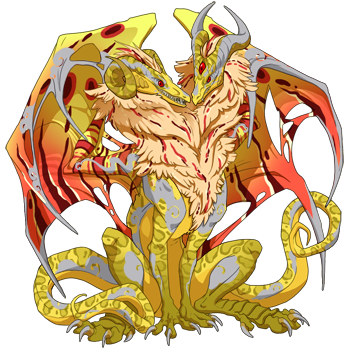
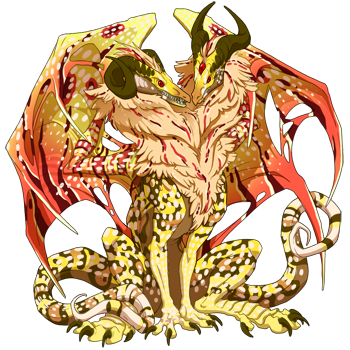
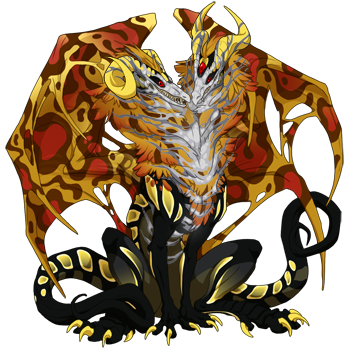
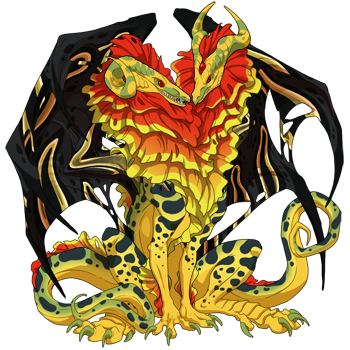
he's meant to look like one of these guys:
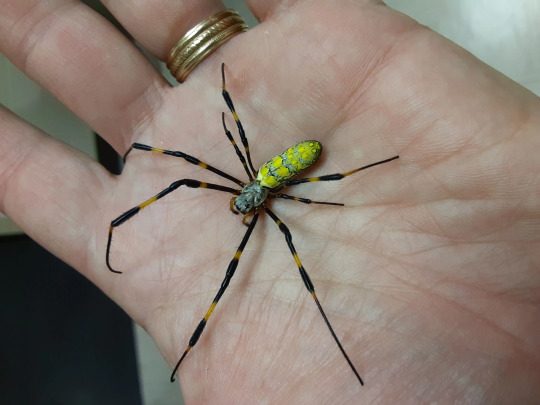
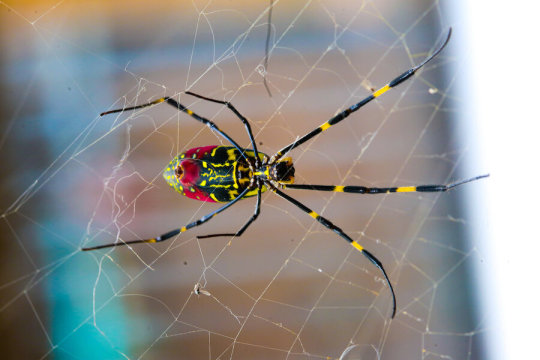
#flight rising#dragons#spiders#joro spider#orb weaver spider#trichonephila clavata#also yes this dragon is trans
3 notes
·
View notes
Text
During our 2023 Outer Banks vacation, on September 2nd, 2023, @lizadomuch and I made a day trip to the Elizabethan Gardens in Manteo. These gardens were established in 1951 by The Garden Club of North Carolina. They wanted to honor the Elizabethan settlers who settled in Roanoke in 1585 and were lost (legend treats it as paranormal or mysterious, but they likely assimilated with the local indigenous tribe, the Croatans, Machapunga, Catawba, or Coree. The assimilation is also described as "adapting to the Algonquian lifestyle." For clarity, the assumed tribe is the Croatan tribe, so I will refer to them as shorthand for the Native American people the settlers assimilated with).
This garden has a wall and a gift shop at the opening and one of the first sculptures you see is this 9ft (2.7m) bronze piece honoring Queen Elizabeth, after whom the garden was named.

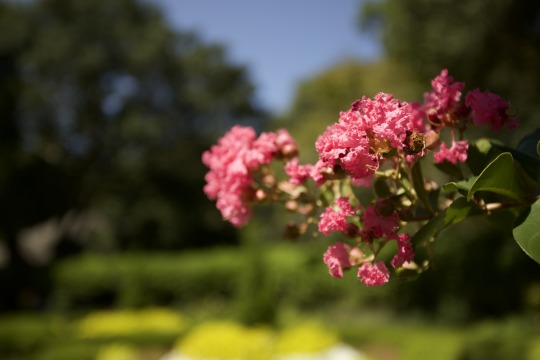
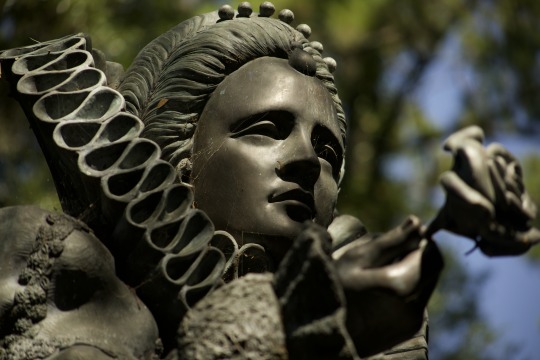
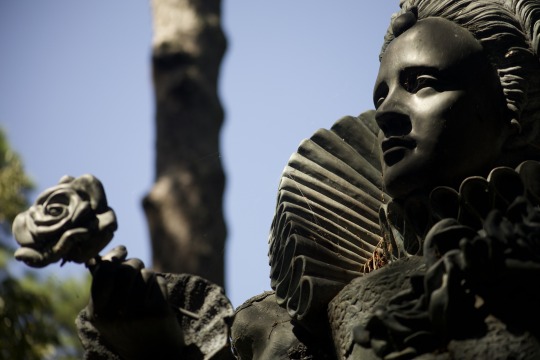
From the beginning, we saw so many butterflies…and spiders.

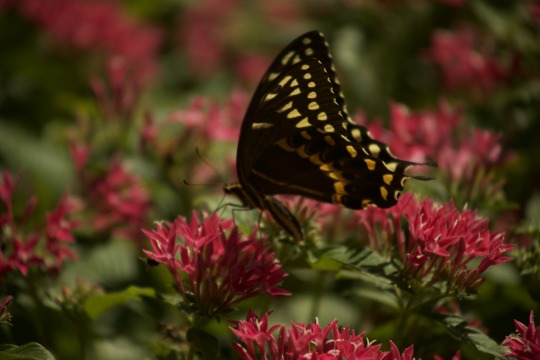
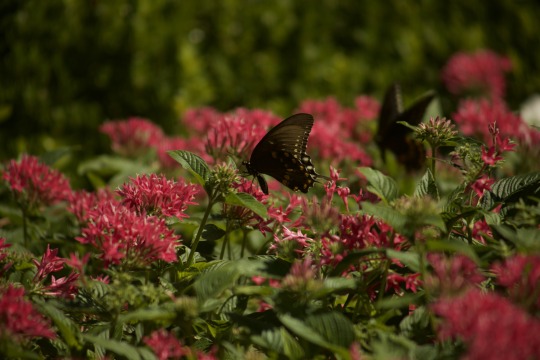

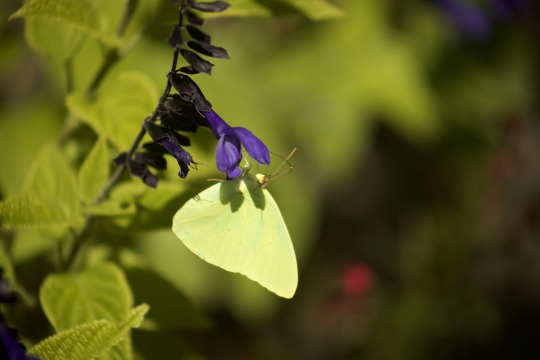

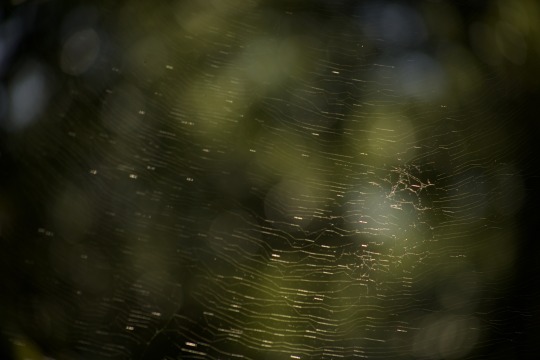
We started with the standard orb-weavers, but we also saw some gnarly Joro spiders. According to Japanese folklore, Joro are compared to the Jorōgumo. The Jorōgumo is a yōkai who disguises herself as an “entangling newlywed woman” to lure in men whom she will eat in her web.
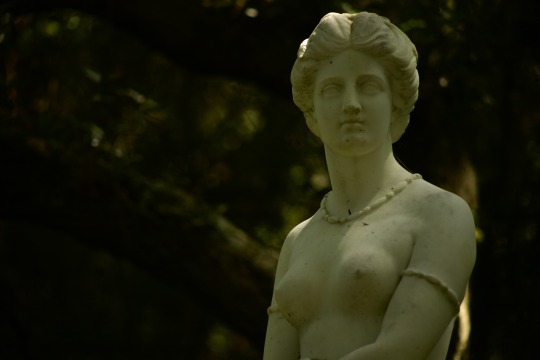
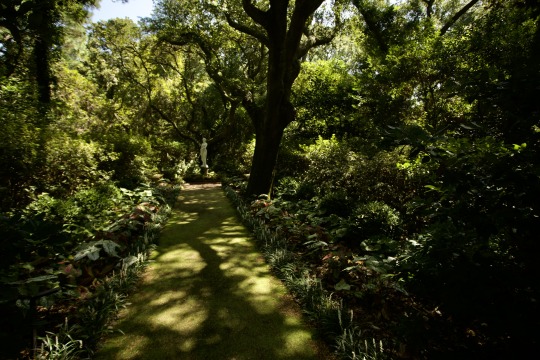
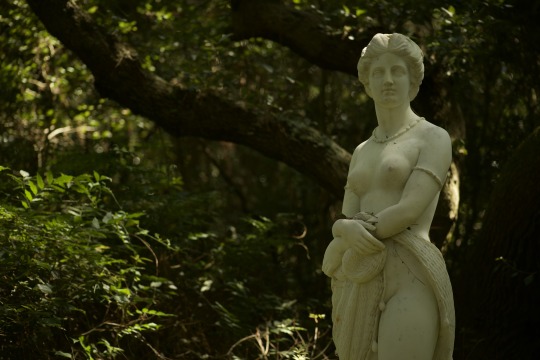
The marble sculpture was created in Rome in 1859 by New England sculptor (Maria) Louisa Lander in honor of Virginia Dare. Dare was the first English girl born on the soil of the New World, according to local history. Lander imagined Dare survived the Roanoke incident and assimilated with the Croatoan people as an “Indian princess.”
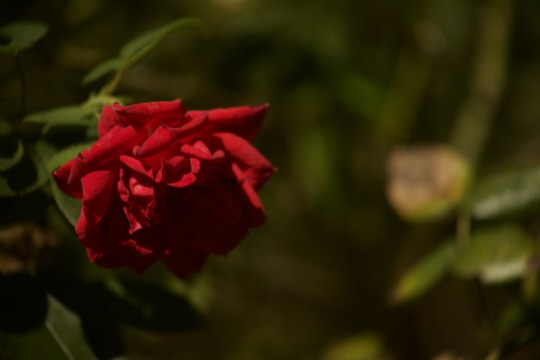
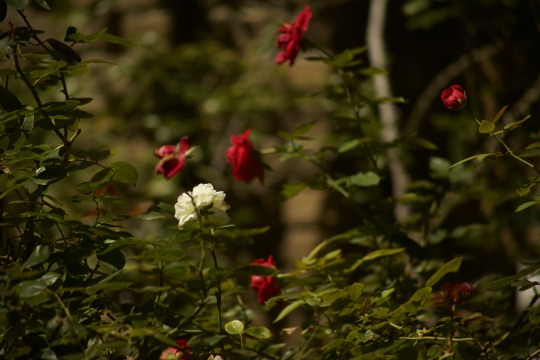
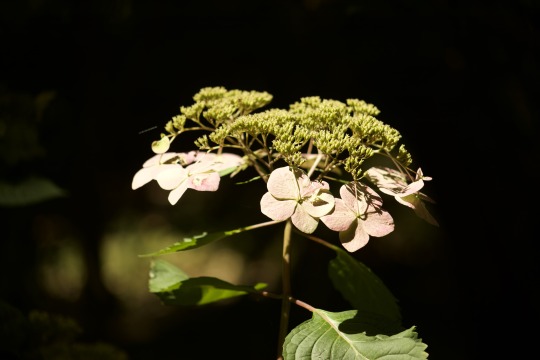
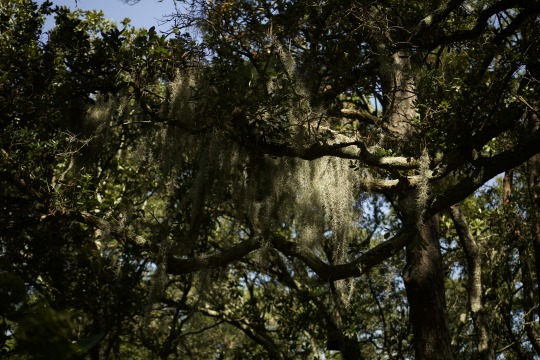
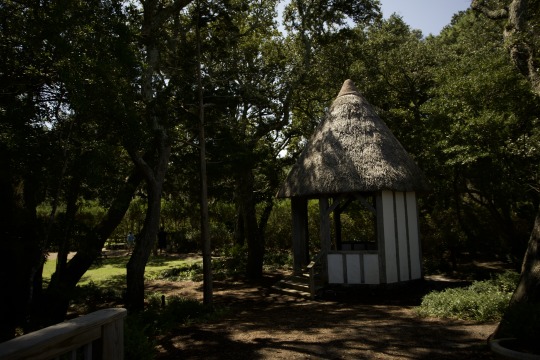

In the later images, after I left the Rose Garden, there was The Gazebo, a replica of traditional English thatch structure and we saw another Joro spider. The columns by the water used to have a gate, but it was eroded away in storms.


In the section titled the Woodland Garden, there were several small statues like gnomes and a satyr. There was also a small statue holding a pillow and people, including myself, offered coins to him.

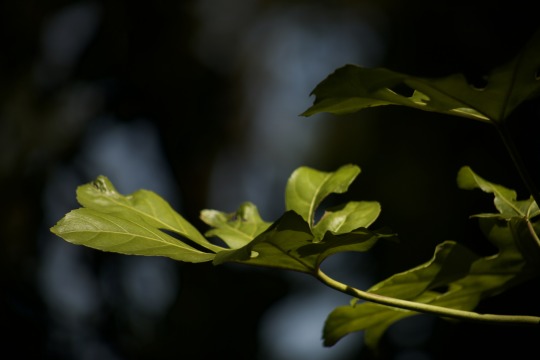
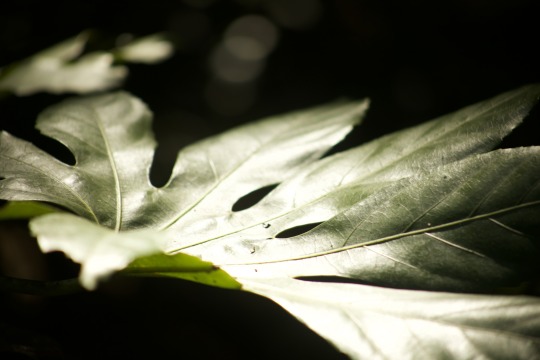
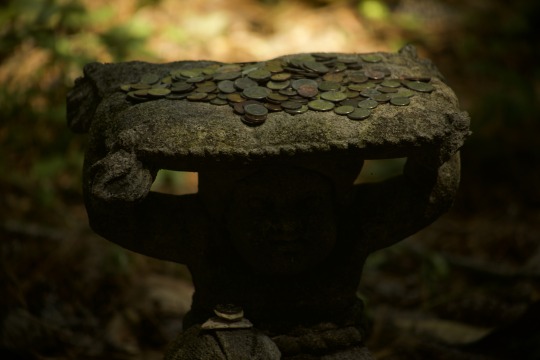
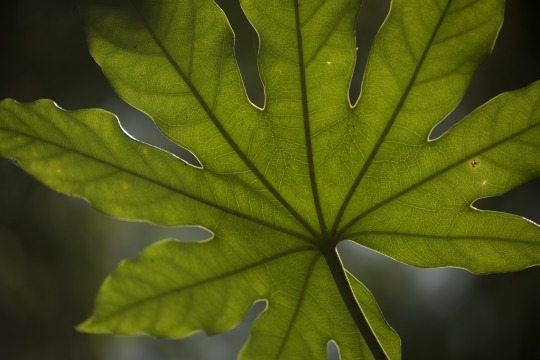
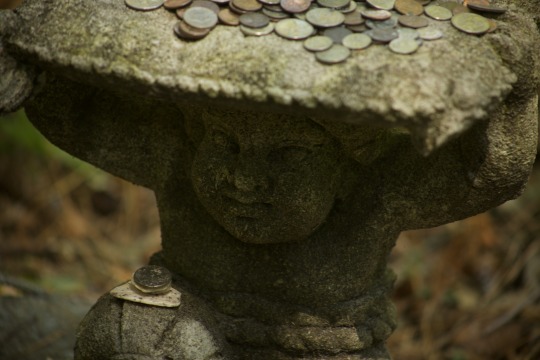
There was a butterfly greenhouse growing what looked like bananas. The doors were open so the butterflies were floating throughout the garden.
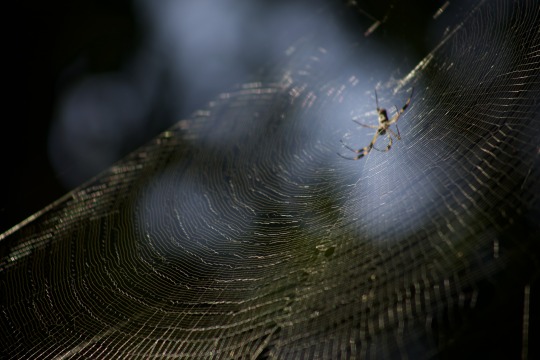

Almost poetically, reminiscent of the orb-weavers who welcomed us, there was a glass orb on display and I loved getting a shot of it with the trees behind it.
#willawisps#storytelling#canon#canon photography#photography#photographers on tumblr#adventure#original photography#original photographers#outdoor photography#landscape#landscape photography#nature aesthetic#nature#nature photography#explore#wanderlust#beach#obx#outer banks#north carolina#elizabethan gardens
20 notes
·
View notes
Text
once you get over the fear of bugs and especially spiders a Huge portion of the human population becomes completely incomprehensible to you. what do you mean you are flipping your shit over joro spiders? yeah they're kinda big and invasive but that's literally just an orb weaver??? what do you Mean you kill the spiders that live on your porch? i hope mosquitoes eat you alive and you reincarnate as a fly in australia
3 notes
·
View notes
Photo
I wanted to find a source on the spider babysitting, cause that sounds amazing!
Instead I learned that Golden Orb Weavers sometimes share webs making little spider communities.
And also that their silk can be used to aid in the reconstruction of damaged nerves.
https://onlinelibrary.wiley.com/doi/abs/10.1111/j.1582-4934.2006.tb00436.x

114K notes
·
View notes
Note

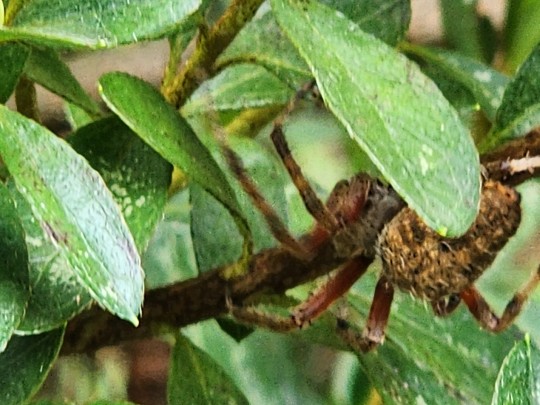



Some bug pics I took last year, I believe the spider was maybe a tropical orb weaver, I'm not sure truthfully and I don't know about the stick insect other than it scared the fuck out of me because it moved when I thought my sister was leaving her grape stems on the counter for the umpteenth time instead of putting it in the trash.
I'm really sad that the invasive joro spiders have been outcompeting the native species. I hate killing them because they and their webs are so pretty too, but the shy orb weavers just can't take the heat, especially as the joros are rather social for spiders while the orb weavers seem prefer to be alone. Also, both joros and orb weavers are pretty "big" for sub tropical spiders, especially joros.
LMAOO I LOVE STICK BUGS BUT THEY SCARE ME TOO !
bugs that camouflage are actually so fucking kewl!! like leaf bugs?!?!??!!?!! i've seen those around my front yard maybe 2 or 3 times and it scared the shit out of me too!!!1!1!111
and the fuzzy guy is super cute too
#cyann'z rambles !!#jiraiblr#landmineblr#jiraiblogging#landmineblogging#thank you for the ask!!!!#bugs
1 note
·
View note
Text
i am so so SO excited for the joro spiders that i hope we'll get ive never seen an orb weaver before but theyre like one of my favorite little critters ever so im very very hype. im thinking abt making a terrarium to keep one in for a week or so to study its behaviors a little bit.
0 notes
Text
What are Joro spiders? The invasive species spreading in the US
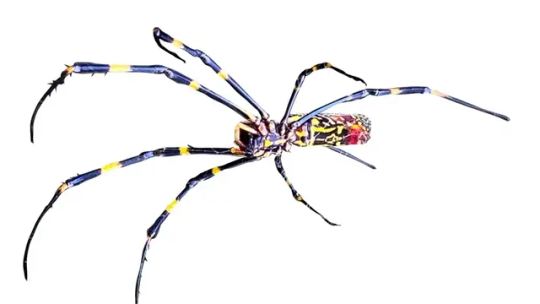
The Joro spiders are sometimes called “parachuting” spiders because they can move by shooting out a long strand of silk that gets caught in the wind and carries them through the air. What are Joro spiders? The Joro — trichonephila clavata — is part of a group of spiders known as “orb weavers” for their highly organized, wheel-shaped webs. Common in Japan, China, Korea and Taiwan, Joro females have colorful yellow, blue and red markings on their bodies. They can measure 3 inches across when their legs are fully extended. Giant, feral goldfish wreaking havoc in Great Lakes The Joro appears better suited to colder temperatures than a related species, researchers at the University of Georgia said in a paper published last year. Are Joro spiders dangerous? According to scientists, the Joro spider only poses a threat to the things that get caught in its web. This can include butterflies, cockroaches, stink bugs and wasps but not humans. “We have no evidence that they’ve done any damage to a person or a pet,” Clemson assistant professor Dave Coyle said.
More News
#current events#gaza#free gaza#i stand with palestine#free free palestine#genocide#tayvis#kc chiefs#kansas city chiefs#taylor and travis#jason kelce#brittany mahomes#super bowl lviii#patrick mahomes#baltimore ravens#nfl football#san fransisco 49ers#nfl#wade wilson#marvel comics#spider man#peter parker#spidey#marvel spiderman#khan younis#israeli army#free palestine#israel#hind#palestine
0 notes
Text
We already have the bigger cousin of the Joro Spider, the Golden Orb Weaver, living here in TX.

This 👆 is Interesting 🤔
38 notes
·
View notes
Note
Isnt there a type of spider that uses their webs to catch air currents in order to fly and travel long distances?
Is it a bird? Is it a plane? No, it's Emmet and uh oh the wind just turned. Help, he's over the lake now. There he goes. Goodbye Emmet.
That's the Joro Spider! I know because they're a recent invasive species here to the East Coast and they are verrry beautiful- They can make their silk golden colored!
I believe there's a few other spiders that can fly on their webs (Called Ballooning) but that's the one I know about because in addition to our normal massive amount of garden spiders and orb weavers we have in late Summer/Early Autumn, Joro Spiders have been showing up en masse... They're very beautiful.
Poor Ingo has to rescue his brother currently floating off over the lake; Though they can fly, swimming is another matter- Maybe that's how you befriend the poor waterlogged spider? Save him from his terrible fate, and he'll take you parasailing!
Spoilered: Image of a Joro Spider. They are large and verrry colorful!

Image desc: [An image of a Joro Spider sitting on a web. It's legs are long, thin, and black with yellow stripes. It's body is primarily vivid yellow with grey and black stripes and two large, bright red spots on the sides.]
#Seth.chitchat#Seth.anon#Seth.asks#Spiders#cw: spiders#I spoiler tagged it in case of spider fears#Drider discussion
15 notes
·
View notes
Note
So, there used to be a Joro spider living below my water tank.
I never named it. Every morning I'll look out and see if it's still there, the thing doesn't move much, I could just grab it if I had wanted to. But I left it be, not because it was an orb weaver and I don't like eating orb weavers, I just didn't feel like bothering this one.
It makes pretty yellow webs.
One night, after a particularly bad storm, the spider and its web disappeared.
I guess I should be glad about it because they reproduce pretty fast, it'll be bad for my garden and one can only eat so many spiders before they get sick of them.
Hello again to you too... :')
22 notes
·
View notes
Photo
Joro Spider aka Japanese golden orb-weaver (Trichonephila clavata)
Female Joro spiders are significantly larger than males. Females can have a body length of about 2-3 centimeters, while males are much smaller. The vibrant and eye-catching colors on the female’s abdomen, including yellow, black, and white markings, make them easily identifiable. Adult females have distinctive spines or projections on their legs, contributing to their unique appearance.

Rinotuna • “spider girl”
character artist
artstation facebook instagram twitter
More from «Artstation» here
#joro spider#rinotuna#humanized guide to animals#personification animals#personified animals#personification#humanized version#humanization#gijinka#art i love#other art#other artists#animal facts#Trichonephila clavata#spider
4 notes
·
View notes
Photo
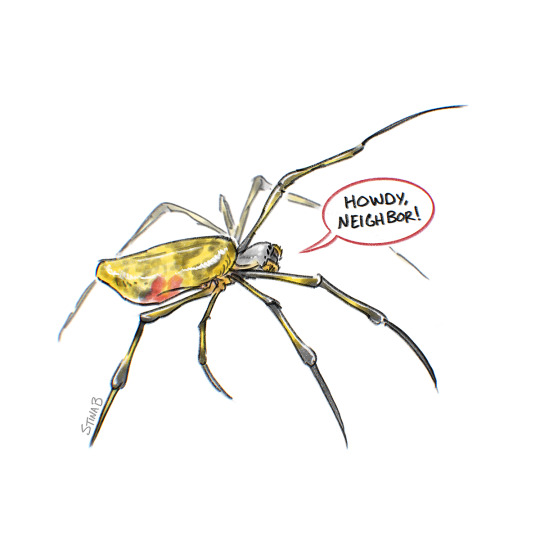
[Image: digital art of a spider, saying “Howdy, neighbor!” in a speech bubble. Its large abdomen is mostly yellow, with black and red markings, and its long legs are black with yellow stripes. One foreleg is lifted as if waving. End ID]
You may have seen some alarming headlines about giant venomous parachuting spiders invading the US and colonizing the east coast. While some of those things are technically correct, the phrasing is often sensationalist and misleading.
Jorō spiders (Trichonephila clavata) originated in East Asia and have been present in the southeast US for around a decade, predominately in Georgia.
Female Jorōs can reach an inch in body-length and are bright yellow, while males are smaller and brown. One of their close relatives, Golden silk orb-weavers (Trichonephila clavipes), are native to the Americas and are similar in size. The baby spiders are the ones who do the “ballooning” (releasing silk so they can be dispersed by wind), a fairly common behavior among spiders.
The venom these spiders produce is medically insignificant for humans. They're unlikely to bite in the first place, and aren’t always able to break human skin even if they try.
Recent studies indicate that Jorōs can survive in regions colder than where they’re currently established. So, it’s possible that populations will begin expanding northwards in the next several years. However not every non-native species is “invasive,” and the ecological impact of these spiders is currently unclear.
If you find a Jorō spider, take a moment to admire them! Even if they’re sometimes a nuisance or are eventually determined to be invasive, that doesn’t mean they’re evil. They're just little creatures, weaving their webs, munching on bugs, and looking great while doing it.
Sources:
Jorō Spiders | PennState Extension (2022)
New spiders in north Georgia are hard to miss but pose no threat | UGA Cooperative Extension (2018)
No, you don't need to worry about joro spiders. They may even be helpful in some ways | NPR (2022)
36 notes
·
View notes
Note
I don’t know if you answer questions like this but how environmentally destructive are the invasive joro spiders in the United States? I like them but I think they’re out-competing our native orb weavers.
I forget who the quote was from, but someone (state official? wildlife department rep? entomologist?) in Georgia said as far as invasive species go, the Joro spider is "not so bad." Scientists have not noticed a big impact on native species yet. But...only time will tell.
52 notes
·
View notes